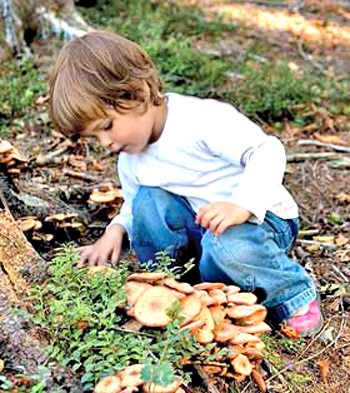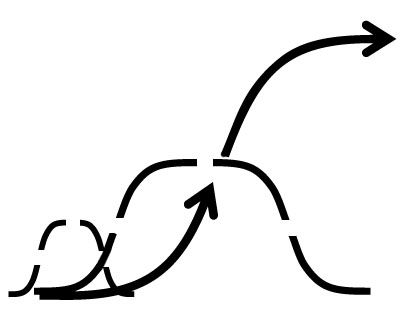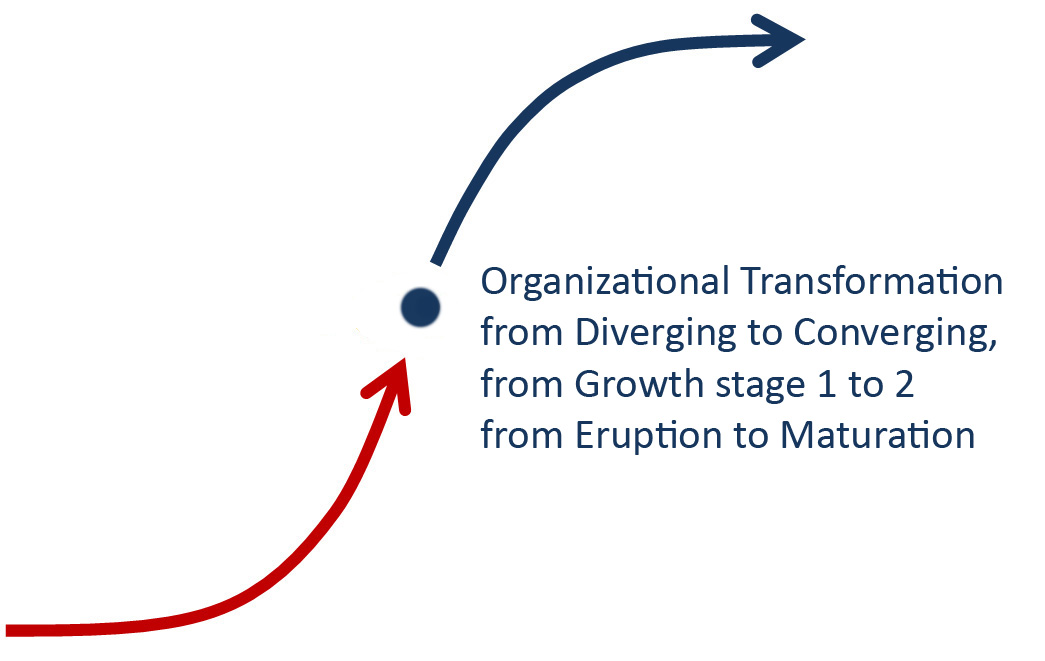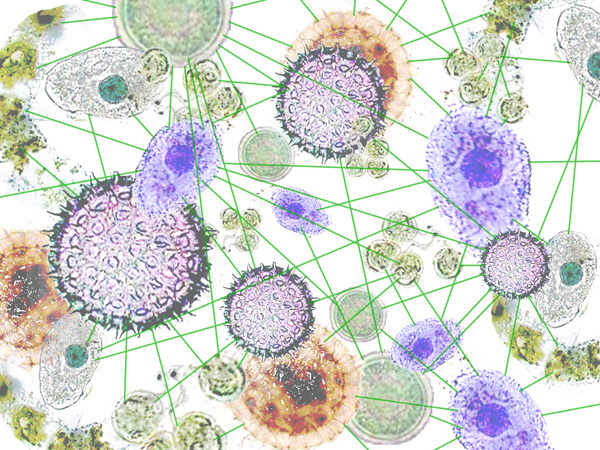Over the years I’ve made various attempts to give people a good set of principles for introducing my way of observing and understanding the workings of natural environmental systems (1).
9 steps of discovery
A suggestion that I try again resulted in the following page, describing 9 steps of discovery. They’re to be made meaningful to someone using them by leading to their discovering things they never would have guessed, about their own world. The goal is gaining a far better general understanding how nature creates and animates her very complexly well organized systems.
The trick in all of it,
is that what we “see” is not what nature is doing, but what we’re thinking of,
making consciousness quite different from reality.
The real world system of nature to understand are the various familiar and unfamiliar things that develop and work by themselves. That includes the weather, social systems, economies, ecologies, but also organisms, storms, currents, cultural events and emerging technologies, etc. They’re also little things like rust spots that magically appear by themselves on your car or other small individual events.
Emergent complex systems that take place “by themselves” in the sense of there being no evidence of central deterministic control, are also found in any spontaneous gesture like a smile, a handshake, or even the experience of personal feelings and thoughts, as form of complex organization in nature that come and go, and lack a pre-existing template for how to do that.
These are clear case of nature having to invent the path in the process of building and completing the process. What opens the door to appreciating them is having a method of observation that fits them all, as following the enduring pattern for all scales and kinds of observable events as completing their own individual life-cycle.
The critical observation is to answer the question “what’s piling up” NOT “what’s the formula”. It’s only theory that world by formulas. Nature works by piling up, so that’s what you study when the subject is how can nature behave in a way not in our formulas.

something about both the thing developing is “in-spired” from inside
and why the environment it is in makes that possible
1) The Art of Observation from Physics for Open Systems, and added resources:
-
-
Observing Systems – 2006 collection of 23 very short essays
Bump on a Curve ¸¸.·´ ¯ `·.¸¸ Notepad – 2007/08 watching the whole life cycles of events
Stories & Experiences; Examples for Teachers – blog entry categories
Principles, methods thinking, & theory of Natural Systems, concepts to play with
-
Observing Systems – 2006 collection of 23 very short essays
the critical question is “what’s nature piling up”?
NOT “what’s the formula”?
My “new” approach to explaining it still presents some of the same basic difficulties that have kept some people from getting started with the old ones. You’ll still need to learn to use the principles to understand what they are for. It’s not that I haven’t tried to find a series of steps for “spoon feeding” the technique to people. It’s that it’s I used a discovery approach to finding them myself, and can only, so far, think of a kind of “bootstrap” discovery approach to teaching them.
Learning to think about “what’s piling up” rather than just “what’s the formula” pushes you to think about physical systems working by themselves, rather than by our explanations…! That’s quite difficult when almost no one anywhere on earth, it really seems, is taught to do that in school. In a way it’s “counter- intuitive” because it’s asking you to rediscover “animal perception”, because reading how things are piling up rather than for explanations is how animals seems to perceive.
So.. there are lots of hidden ways we do it already, automatically and unconsciously, using natural primitive recognition and response behaviors, like elemental “alertness”. It’s when you start rediscovering the usefulness of making those organic learning processes conscious that speeds up progress. The effort then raises various unfamiliar lines of questioning. For example, you:
- look patiently for continuities or discontinuities of change,
- irreversible change and recurrent change,
- successive additions of small change that compose them,
- where they’re headed and won’t be able to continue,
- allowing whole networks of environmental systems to act as a whole.
You’ll still be looking for explanations and how to predict things, but also discover that learning to anticipate unexplainable behaviors greatly improves the value of explanations by putting them in a real world context. They work together to give you insights that let you better anticipate and respond.
helping people understand natural environmental system behavior well enough to see what needs to be done
This kind of understanding will make a big difference for helping people see how to keep bubbles from bursting, disputes from spinning out of control, world economies from exhausting their own resources, etc. Present efforts on these notoriously “wicked problems” still often fail, just for lack of imagination as to what is happening.
As with the rapid depletion of the world’s economic resources, our best efforts have only let the problem keep getting worse and worse. It’s quite possible, if you bring a sandwich, that you could sit in the woods and patiently watch a mushroom grow, and let it give you the insight to why our economy grows like a cancer on earth instead of like a mushroom.
Many kinds of natural system economies do demonstrate the feat of remaining vitally healthy after meeting their limits to growth. So far established science has not yet discovered how to study that, though. So my suggestion is that they learn to watch it happen. Mainstream science simply was never designed to do that, to closely study individual self-organizing systems. Today the researchers who try mostly still struggle with finding the right language and questions to ask.
Even if computer programs are ever able to imitate complex self-organization, as we see everywhere in nature, it won’t be any more possible to understand it from the computer’s program. The basic criterion is to generate organized behavior unrecognizable from the rules by which the computer is programmed. So real self-organization in a computer will be just like in nature, far too complexly organized and original to be understood from the rules of the parts.
I think the subject may also be misunderstood because I present it as pure science, not really for proving anything, but just for helping people become better observers. It’s not particularly for making money or becoming a better debater, etc. The method is really just for becoming better at noticing how nature does things, to better understand whatever purposes you bring to it or find by having your eyes open as you watch what’s happening around you.
For all these reasons, these 9 steps may not really make much sense until you succeed in using them. The hope is you’ll come to recognize the patterns of natural organization they talk about as being rather familiar parts of your own environment, that were just not appreciated until you learned to “connect the dots”.
So, the best place to start is with closely watching cases where nature is very smoothly connecting a lot of disconnected dots herself, perhaps displaying a “learning curve” for “something happening”, and displaying the kind of emerging change in your world that “makes life lively”. Then pay very close attention and try to understand something about both the thing developing and why the environment it is in makes it possible.
___________
Steps to a natural systems view
1. the world of physical systems we look at isn’t very much like the world of information systems we make up in our heads…
Much of the time we get the two confused, that what we “see” is an invention of our own, and not at all like what we are looking at. The apple in our hand and the idea of apple in our heads are hardly even related, the apple in our hand coming from a tree built by complex processes of nature, the one in our minds being a personalized version of a social construct of what we use an apple for, it’s meanings to us and little or nothing corresponding to the thing itself, just a concept.
2. It helps to consider physical systems and information systems as quite different realities
Like “software” is different from “hardware”, so are human information systems more like “vaporware” when compared to the complexly organized physical “realware” of our world humans don’t have any role in creating.
3. Anything you see working by itself
…has its way of doing it hidden inside it, because what you see is just an idea, and what you’re looking at are systems
If you look you can usually find evidence of it, and that it had to have developed there, by itself, just as it ends up working by itself, as a self-organized system. Every energy using system has a history of its own local development
…displays an unrepeatable moment in time, because what you see is just an idea, and what you’re looking is a system of change
You can usually find traces of its entire history within and around it, as a record of its original emergence and developing changes, from its beginning toward its end.
Every system is a product of accumulation, like a person is an accumulation from a single cell that comes to a stopping point in the maturation of an individual, and how that accumulation of cells also retraces the accumulative history of retained evolutionary changes of the species. Every form of organization that works by itself is like that, both created by its development and a record of its development.
4. Information about physical processes is then always highly incomplete
information is mostly missing the organization and behavior of things that work by themselves, that is hidden within their own accumulated internal designs and behaviors
information actually has no scale of its own, but is infinitely elastic in a way that no physical system of relationships can be. There is no natural limit to how fast or how much you can change information the way there are very stubborn limits to how fast or how much you can change any physical things
so, an information world has no moorings in reality, without stable connections to physical things. Lacking that its ‘words’ become unstable
5. By either observation or theory one can deduce that all observable physical things or processes relied on local self-organizing systems
to originally come into being by a local growth process
and come eventually end by a local decay process
exposed by the many aspects of change that take time, and need to proceed by graduated changes that need to occur by changing processes as they go.
6. As you study how physical things change independent of the information we have about them,
you find changes in external appearance or behavior corresponding to changes in internal organization
 Like life-cycles or successions of diverging and then converging processes, seen in Time Lines that expose changes in Internal Worlds that develop with External relationships.
Like life-cycles or successions of diverging and then converging processes, seen in Time Lines that expose changes in Internal Worlds that develop with External relationships.
with changes in the form of the curves and the moments in time when they occur, representing revolutions in complex internal and external relationships.
typically such changes in the form of internal and external design occur throughout such systems at the same time, as if by consensus, but of course orchestrated by other means to be discovered.
It’s always the case that internal change is influenced by external condition, but quite rare it seems that it is caused by them.
External conditions, like sufficient heat causing a fire, seem deterministic, but actually just change the environment to make the internal processes of combustion of some other thing much easier to become self-sustaining. That’s a huge difference between what one must conclude from an information view and from a natural systems view.
7. The particular change from diverging to converging processes is quite easy to mark, as the inflection point between two curves with opposite curvature. 

What is odd about it is that it occurs at a point in the curve where change in the curve is at a complete standstill.
You later find that’s when big change tends to occur, not in the midst of turbulence but at moments of quiet, when a whole system can come together on taking a new direction. No, they don’t ‘think’ about it, but during the “calms before the storm” is usually where things “jell” if they are going to.
A recent discovery that I’ll get around to posting more on sometime is that one of Alan Touring’s more interesting mathematical conjectures, his 1952 Chemical Basis of Morphogenesis , describes an idealized model of emergence from a quiet but unstable environment too. That appears to imply the same thing, and be consistent generally with the basis in physics for the same principle, that complex systems need to start small, and shepherd all forms of change in physical systems, to satisfy the simple but unconditional requirement of energy conservation for continuity in energy uses, as shown mathematically in my 1995 Law of Emergence & Continuity in Change.
8. So, one has to stretch one’s mental habits quite a bit to study what the natural ingredients of this systems alchemy really are…
Something evidently brings about the dramatic internal changes in complex organization of natural systems, that are far more complex than the environmental forces they are also influenced by.
9. Not the least of the challenges is trying to understand the development of the thought processes of modern natural science, which rule out all such natural processes as not being “deterministic”…
If you got the lesson of step #1 above, it’ll make sense that what happened was our information world took an independent path of development from the physical process in which it was immersed.
In searching for the point of commonality, I find a surprisingly simple one, in familiar language of the natural world, using words that refer directly to directly observable things and experiences.
It seems to be only the world of abstract rule based explanations for nature, as useful as it is, that assumed anything in nature could be explained with only on our sketchy information from external observations, and our limited success in predicting a few things.
_________
Exercises
ed 4/4/12
Ex1. Reconstructing you natural perceptions, leaving out the brain’s tendency to turn all of life into some theory…
A consider the steps of changing continuity, for individual, complex, irreversible, accumulative, physical, processes of:
a) “making lunch”, b) “greeting a friend”, d) your own “fertilization to graduation” to become an adult. Maybe you start from seeing “making lunch” as building a wave of coordinated discovery/responses that start from checking the fridge and end the finishing touch to serving the table and sitting down.
- Ask,
- what’s branching out and how?,
- when does it turn to branching in?,
- what completes it?
- Stretch your mind to making “big stories” of little changes or “little stories” of big changes, that are each versions of he other.
- Look for “what’s piling up” NOT “what’s the formula”
- study the physical successions as working and responding themselves,
(not by explanations…!) - rediscover your own automatic response talents and shortcomings as an observer, & the usefulness of making your organic learning & response processes conscious.
From intro – So.. there are lots of hidden ways we do it already, automatically and unconsciously, using natural primitive recognition and response behaviors, like elemental “alertness”. It’s when you start rediscovering the usefulness of making those organic learning processes conscious that speeds up progress. The effort then raises various unfamiliar lines of questioning. For example, you:
- look patiently for continuities or discontinuities of accumulating change,
- irreversible and recurrent kinds,
- successive additions of small change that compose them,
- where they’re headed and won’t be able to continue,
- allowing whole networks of environmental systems to act as a whole.
JLH

